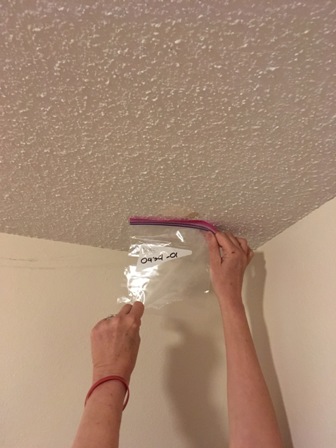How to Eliminate Mold From Every House Surface area
Mold spores are all over around us in every type of climate. Mold is fungis and some types are very helpful to humanity (think about penicillin), while others can be quite hazardous to crops, respiratory systems, and the integrity of structures. Hazardous Mold vs. Mildew The most common kind of mold found in homes is mildew.
Mildew is a surface mold that grows in warm, wet places like your bathroom and on materials and books kept in wet basements. Mildew begins as a gray or white powdery nest. It will turn black or brown if not removed quickly and often looks like soil build-up. To evaluate if the surface area is covered with mildew or simply dirt, dab the stain with a cotton bud dipped in home chlorine bleach. If the stain lightens or vanishes after two or three minutes, it's mildew. If not, it's probably simply dirt. If you detect a moldy smell throughout your house, then you have a high concentration of mold. It can be originating from a hinder filled with moist towels, from a damp crawlspace under your home, or carpets that have mold growing in the cushioning. It's certainly time to do something about it to eliminate the problem. Now you know that all mildew is mold but not all molds are mildew.
Mildew can stain and slowly harm surfaces but there are much more harmful molds that can harm the structure of your home. If you see a black or green mold that is fuzzy or slimy and the drywall or wood underneath is soft or crumbles, there is irreparable rot and the mold and the broken surfaces should be gotten rid of instantly.
Employing Specialists If mildew infestation is captured early, you can quickly manage it with home cleaners.
Caution For substantial mold problems, think about hiring an expert. Some molds are highly toxic and even less dangerous molds can trigger issues for anyone with mold allergic reactions or compromised breathing systems. The general rule is if the mold covers 10 or more square feet, hire an expert. Eliminating big mold nests needs direct exposure to heavy-duty chemicals and appropriate disposal of plagued building materials.
Regional public health departments can offer guidance on mold screening and refer you to a specialist mold remover.
Products That Kill Mold Chlorine bleach: Sodium hypochlorite or routine home bleach works best to ruin mold and remove any staining. It is rather severe and should be diluted before using.
Warning Care should be utilized due to toxicity and dangerous fumes and bleach needs to never ever be integrated with ammonia.

Hydrogen peroxide: Less severe than chlorine bleach, hydrogen peroxide (three to 10 percent solution) will kill mold and lighten spots. While it does have a whitening effect, it works more gradually than chlorine bleach however has no toxic fumes or residue.
Distilled white vinegar: Vinegar is acidic and gradually breaks down the structure of mold and kills it. Vinegar is http://www.bbc.co.uk/search?q=Mold inspection non-toxic however mold stains may stay and extra scrubbing with a household cleaner may be needed.
Sodium bicarbonate and borax: Salt bicarbonate (baking soda) and borax each have a high pH that hinders the development and survival of mold. Both items are affordable, non-toxic, and easy to combine with water. Borax will work better in eliminating any lingering discolorations but not as effectively as a more powerful cleaning item. When using any of these products, do not wash away the cleansing solution totally. Leaving a little the cleaner will assist inhibit future mold development.
Removal from Fabric If your home has actually been flooded and mold and germs have actually been delegated grow for many days, it might be impossible to restore fabric products. If mildew has developed due to moisture and is caught early, it can easily be eliminated from many fabrics. Begin by taking the items outside to brush away as much surface area mold as possible and to avoid spreading out the mold spores inside your home. If the material is washable, utilize the most popular water recommended on the care label and add a disinfectant. If stains remain, create an option of oxygen bleach and water and permit the clothes to soak for at least 8 hours.
Oxygen bleach can be utilized safely on any washable material. For materials that are dry clean only, brush away the mildew outdoors and then head to a professional cleaner. Determine and explain the stains and many materials can be successfully restored.
Leather Shoes, Coats, Add-on, and Furnishings Mold on leather coats, shoes, purses, and furnishings must be eliminated outside, if possible. Clean down the surface with a fabric dipped in distilled white vinegar and after that with a good leather soap and warm water. mold assessment Dry with a soft cloth and allow to air dry completely. As soon as completely dry, deal with the product with a leather conditioner.
Books and Papers Mold will eventually damage paper but it can be effectively gotten rid of. For pricey books and traditionally substantial papers, seek advice from an expert manager. Never attempt to deal with moist paper. The mold will smear and become nearly difficult to remove. Enable the paper in books to air dry thoroughly in the sun or location in a sealed container with moisture absorbent material like silica gel or cornstarch sprayed in between the pages. When the book is dry, head outside and utilize a soft paintbrush or cloth to carefully brush away the mildew from the cover and each page. Slide a sheet of waxed paper under each page to secure the page behind it. Somewhat dampen a tidy, soft cloth with hydrogen peroxide and carefully wipe down each page enabling it to air dry entirely prior to relocating to the next page.